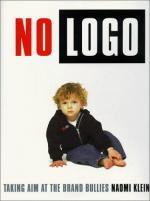
|
| Name: _________________________ | Period: ___________________ |
This test consists of 5 multiple choice questions, 5 short answer questions, and 10 short essay questions.
Multiple Choice Questions
1. Markets that respond to the tyranny of size have always had a tendency toward __________.
(a) Buyouts.
(b) Illegal activities.
(c) Monopoly.
(d) Low prices.
2. Wal-Mart has the power to veto certain CDs or books since that one book or CD is not going to impact its ______________.
(a) Attitude.
(b) Customers.
(c) Reputation.
(d) Bottom line.
3. Over time, however, the people who were being used to promote brands realized that the cultural _______ was being usurped by larger corporations.
(a) Space.
(b) Identity.
(c) Truth.
(d) Tradition.
4. The goal of branding was to establish a/an _____________ connection between the customer and the product.
(a) Loyal.
(b) Emotional.
(c) Electric.
(d) Money.
5. People begin to realize that the corporate ideas of 'cool' were dictated by the capitalists who were driven by ________.
(a) Greed.
(b) Pride.
(c) Truth.
(d) Honor.
Short Answer Questions
1. __________ bought block stocks in Hasbro and Galoob before he sold the toy companies the licensing rights to the new Star Wars films.
2. Identifying the segments of society which would be the most ____________ was the next level of branding.
3. Many more people were buying __________ brands in order to save money during tighter times in the market.
4. According to the book, _________ is something which is becoming less and less of a reality in the world of capitalism.
5. What did kids buy when the real version of a product was too expensive or too out of reach?
Short Essay Questions
1. How have some corporations consumed public space as well, according to Klein in this book?
2. What became commonplace in the public school systems as a result of the appeal of branding concepts?
3. What does the idea of synergy in brand-run corporations mean to the consumer and to the brand?
4. Who does Klein consider to be some of the winners in terms of marketing to teens in the 1990s?
5. What is the reason why most corporations for most of the Twentieth century were growing in size?
6. Why don't consumers fail to realize the consolidation of the various business industries in their lives?
7. What are the factors which serve to restrict the choice of consumers in the market?
8. What are some of the examples of brand extension possibilities which businesses began to explore in the 1990s?
9. What are some of the ways in which entire buildings can be used to help with branding campaigns?
10. What had to happen in businesses when they realized that traditional advertising was not enough?
|
This section contains 600 words (approx. 2 pages at 300 words per page) |

|




